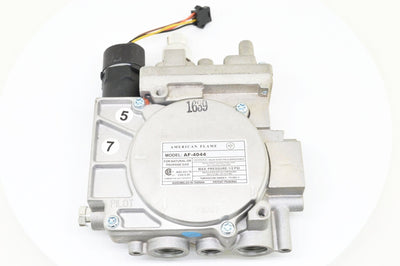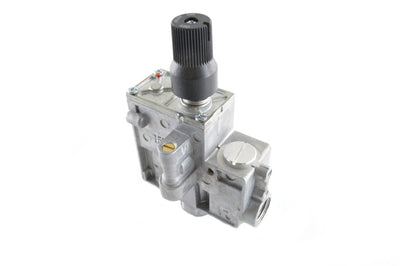Where do I find the emissions on my wood unit
Where do I find the emissions on my wood unit?
Does your wood-burning unit leave you pondering about its emissions? Emissions from such units can contribute significantly to air pollution. This blog intends to guide you on how and where to find the emission rates of your wood unit, simplifying the complex calculations or jargon involved.
Let's dive right in to clear up this smoky subject!
Key Takeaways
- Emission factors help measure pollution from your wood unit. They tell how much pollution gets released per unit of activity or material used.
- To find your wood unit's emissions, look for data in manuals or product specifications. You can also ask environmental agencies for guidance.
- Reports on annual emissions should detail all kinds of pollutants, such as greenhouse gases and fugitive emissions, that escape from leaks or windblown disturbances.
- It's important to report potential-to-emit (PTE) data accurately. The PTE considers not only the maximum emission rate but also any devices used to reduce emissions.
- Accurate reporting helps protect air quality and public health. If you don't report correctly, you might have to pay penalties. Remember: Keeping our air clean is everyone's job!
Understanding Emissions from Your Wood Unit
This section explores the concept of emissions emanating from your wood unit, delving into what emission factors are and explaining how they are developed. Understanding these aspects is crucial as it equips you with the knowledge needed to accurately track and report your wood unit's emissions for better environmental compliance.
What are Emission Factors?
Emission factors serve a crucial role in assessing greenhouse gas (GHG) emissions from any source, including your wood unit. Essentially, they provide a standardized method for measuring the amount of pollution generated per unit of activity or input material.
For instance, an emission factor might quantify the mass of carbon dioxide released per ton of wood combusted. Their development involves complex scientific processes and expert judgment based on stoichiometric analysis or empirical data.
Various authorities such as government agencies and international organizations compile these factors into accessible databases and guidelines to aid in environmental assessments and mitigation strategies.
How are Emission Factors Developed?
Scientists develop emission factors using stoichiometry, a method based on known chemical reactions, or empirical methods involving statistical sample measurements. In these processes, they scrutinize everything from the type of fuel combusted to complex activity data.
For instance, think about burning bituminous coal; experts would calculate the CO2 emissions produced by this specific action.
Although some factors pertain uniquely to certain sources like dairy cows or residential wood-burning units, others can integrate values across various sources and processes. They can also be classified as direct or indirect—direct emission factors quantify emissions physically released by an activity itself, whereas indirect ones estimate emissions originating from another linked process.
Accuracy and precision stand at the core of developing efficacious emission factors. To secure them, researchers consider elements such as geographic relevance and application scale.
Whether it's used for a corporate-level GHG accounting project or national-scale carbon dioxide inventory influences what factor is appropriate.
Emission Factor Databases like IPCC Guidelines are valuable resources in this development process too—they provide access to consolidated factors for diverse sectors stretching from lime production to motor gasoline use across different regions.
Hence through rigorous methods mixing stoichiometric principles with measured data and accounting painstakingly for variables including geography and scale—this is how comprehensive emission factors come into existence.
Where to Find the Emissions on Your Wood Unit
Understanding your wood unit's emissions begins with finding the correct emission factor. This information is often provided in detailed manuals or product specifications from the manufacturer.
If not, you can reach out to relevant environmental agencies such as Illinois Environmental Protection Agency, US EPA or use online resources like Emission Factor Databases for guidance.
Once obtained, these factors form a critical part of Annual Emissions Reports which document air quality impact of your unit's operation.
Locating an Appropriate Emission Factor
Choosing the right emission factor for your wood unit can be a complex task. Here are the steps you can follow to navigate this crucial part of emission reporting.
- Start by understanding what type of emission factor you need. The choice will depend on your environmental context and technology in use.
- Use scientific literature and expert judgment accurately to interpret emission factors, as stressed in [IMPORTANT FACTS].
- Consider using stoichiometric emission factors for highly accurate results. These work exceptionally well if you're dealing with known chemical reactions.
- Distinguish between direct and indirect emission factors - they estimate emissions from different activities.
- Verify the accuracy of your chosen emission factor by comparing it against sample measurements or stoichiometry outcomes.
- Include national, corporate, and project level considerations when choosing an appropriate factor as they influence the accuracy greatly.
- Employ databases like Canada’s National Pollutant Release Inventory or New Zealand’s Emission Factor Database to source reliable data for your calculations.
Reporting Emissions in Annual Emissions Reports
Fulfilling the requirements of Annual Emissions Reports requires detailed attention and understanding. Here are some necessary steps for accurate reporting:
- Make sure your reports reflect emissions from the previous calendar year, as per guidelines by the Illinois Environmental Protection Agency.
- Utilize your permits and records to identify emission units involved in wood burning or other activities.
- Calculate emissions relying on recognized methods such as Life - cycle analysis, Stoichiometry, Mass balance reactions and more.
- Use Emission Factor Databases and Resources to provide accurate emission factors wherever required.
- Include details about both Direct and Indirect emission factors.
- Provide information about Fuel combustion processes if they are part of your wood unit operations.
- Send completed Annual Emissions Reports by May 1 every year to the Illinois EPA Bureau of Air, even if you did not receive forms by February 1.
- Keep data pertaining to GHG accounting, CO2 emissions and potential emissions from fugitive sources ready for inclusion in the report.
- Check for Data quality issues before submission of the report to avoid any penalties due to incorrect reporting.
- You may opt for electronic reporting using IEPA Permit Portal obeying all rules regarding Confidentiality in reporting and Trade secrets.
Specific Questions About Emissions
This section will delve deeper into specific queries about wood unit emissions, such as how to calculate the potential to emit, which types of emissions need reporting, and guidelines for documenting fugitive emissions.
How is Potential to Emit Calculated?
Emission calculations begin with determining the maximum emission rate. This is then multiplied by the total number of hours in a year. To account for reasonable working considerations, this product is divided by 2000 as per standard procedure.
However, it's not all about raw calculations and rigid mathematics.
The potential to emit isn't simply dictated by these numbers alone. The calculation also takes into consideration any control devices or technological advances that may be used to reduce emissions.
This ensures a more accurate estimation of final emission levels which are critical for compliance with environmental regulations and standards set out by authorities such as the Illinois Environmental Protection Agency (IEPA).
What Emissions Must be Reported?
Understanding the emissions that need to be reported is crucial for maintaining compliance with state and federal regulations. In Illinois, facilities are required to report their emission units as part of their Annual Emissions Reports to the Illinois EPA Bureau of Air. Here are the key types of emissions that must be reported:
- Greenhouse Gases: These include gases such as Carbon dioxide (CO2), Methane (CH4), and Nitrous oxide (N2O). They contribute largely towards global warming and climate change.
- Criteria Pollutants: These pollutants are subject to National Ambient Air Quality Standards set by U.S Environmental Protection Agency, such as nitrogen dioxide, sulfur dioxide, ozone, carbon monoxide, lead and particulate matter.
- Hazardous Air Pollutants (HAPs): HAPs cause or may cause harm to people's health and environment if released into the air over certain levels.
- Fugitive Emissions: These are uncontrolled emissions that escape from equipment leaks, evaporation or windblown disturbances in areas like storage piles.
- Emissions from Combustion: This involves burning fuel in internal combustion engines or boilers, leading to CO2 emissions among others.
- Emissions from Specific Activities: Certain activities such as residential wood burning or operations involving bituminous coal have specific reporting requirements due to their potential impact on air quality.
Reporting Fugitive Emissions
Understanding and reporting fugitive emissions is a critical aspect of maintaining air quality. Here are the key steps to consider:
- Identify the sources of fugitive emissions in your wood unit, such as leaks from equipment or pipelines.
- Use emission factors developed by the Illinois Environmental Protection Agency or U.S. Environmental Protection Agency to calculate potential emissions.
- Apply emission calculation methods specifically designed for fugitive emissions, including mass balance reactions and stoichiometric EFs.
- Record your findings in Annual Emissions Reports using electronic reporting system provided by IEPA Permit Portal.
- Ensure that activity data is accurate and up-to-date. Inaccuracies can lead to incorrect reporting and potential noncompliance with air pollution operating permit conditions.
- Report all types of greenhouse gases, including carbon dioxide (CO2), nitrous oxide (N2O), and methane (CH4).
- Maintain strict confidentiality in reporting, especially if the information contains trade secrets.
- Use continuous emissions monitoring (CEMS) where feasible to track real - time emission rates and enhance accuracy.
Importance of Accurate Emission Reporting
Accurate emission reporting plays a crucial role in environmental conservation, allowing for comprehensive tracking and management of pollutants. Precise data can help authorities devise strategies to mitigate air pollution, safeguarding both public health and the environment.
Incorrect reporting can carry significant penalties, making diligent compliance with reporting guidelines essential for all wood units operators. Reporting accuracy is not merely about avoiding penalties; it also contributes significantly towards creating cleaner air quality and advancing sustainable practices within industry operations.
Ensuring Accuracy in Your Report
Accuracy is key in reporting emissions from your wood unit. Here are some steps to ensure accurate emission reporting:
- Always use the right Emission Factors. The U.S. Environmental Protection Agency (US EPA) provides a wide range of emission factors for different activities and scenarios.
- Use reliable Emission Calculation Methods. These can be chemical reactions, mass balance reactions, or even simple sample measurements.
- Make sure to report all types of emissions, including CO2, Nitrous oxide (N2O), and Methane (CH4).
- Refer accurately to your Air Pollution Operating Permit when calculating Potential To Emit.
- Always include Fugitive Emissions if they are part of your facility's operations.
- Keep a well - documented record of your data sources, calculations, assumptions, and methods used for the GHG accounting process.
- Ensure correct Unit Conversions while calculating emissions - mistakes here often lead to significant errors in reported figures.
- Submit completed Annual Emissions Reports by the May 1 deadline to avoid penalties from Illinois Environmental Protection Agency.
- Confidentiality in Reporting can be maintained for sensitive information by claiming it as a "trade secret".
- Utilize the IEPA Permit Portal for simplified electronic reporting that lessens chances of human error.
Potential Consequences of Incorrect Reporting
False reporting of emissions can lead to serious problems. It not only puts the environment at risk but also violates various environmental laws set by authorities like Illinois Environmental Protection Agency and U.S. Environmental Protection Agency (US EPA).
Failing to recognize or underestimating your wood unit's emission levels could result in stringent regulatory action, including penalties.
Incorrect filings can bring about hefty fines. If you don't submit a fully completed Annual Emissions Report on time, expect consequences such as these monetary penalties. Additionally, businesses caught providing misleading information may face legal repercussions that go beyond financial costs, such as damaging their reputation and creating distrust among consumers and stakeholders.
Correct data reporting is more than an obligation; it safeguards our air quality while maintaining business integrity.
Additional Resources for Emission Reporting
The Illinois Environmental Protection Agency (IEPA) is a key resource for emission reporting. It provides annual emissions report forms and guidance on air pollution operating permits.
The IEPA even sends these necessary forms to facilities each year, making it easier for organizations to comply with regulations.
Additional resources can be found online through databases like the International Energy Agency or New Zealand’s Emission Factor Database. These sites provide extensive data on various factors such as greenhouse gases and fuel combustion, which are vital in calculating emissions accurately.
Looking beyond international bodies, professional consultants also offer expert advice on emission reporting. Firms such as LCA Consultants have specialists who can provide personalized solutions based on your organization's specific needs.
This might include guidance on complex calculations or understanding compliance requirements better.
Conclusion
Understanding and accurately reporting emissions from your wood unit is crucial for environmental compliance. With the right knowledge, you can find emission information and use it to contribute positively towards our global effort against pollution.
It's more than just responsible action; it's a commitment to preserving air quality and fostering a healthier planet. So, dive into those numbers, respect regulations, and join the fight against harmful emissions today!
FAQs
1. What is an annual emissions report on a wood unit?
An Annual Emissions Report is a document that provides the data on air pollutants, greenhouse gases and other emissions from your wood-burning unit.
2. How can I calculate my emissions?
You can use emission factors or specific calculation methods provided by agencies like US EPA to estimate the pollution produced during fuel combustion in your wood unit.
3. Is there professional help available if I'm unsure how to measure my emissions?
Yes, organizations such as Illinois Environmental Protection Agency or IEPA offers expert judgment and resources via their permit portal for calculating potential emissions accurately.
4. Can monitoring systems continuously track my wood's burning emissions?
Yes! Continuous Emissions Monitoring Systems (CEMS) are designed specifically to monitor and record emission rates consistently over time coming from various fuel combusted devices including residential and commercial units.
5. Why does it matter what kind of wood or fuel I burn in my OWB (Outdoor Wood Boiler)?
The type of fuel you choose for your OWB creates different types of pollutants and GHGs; for instance burning Bituminous coal generates carbon dioxide(CO2), Nitrous Oxide (N2O)and Methane(CH4).
6. Are there regulations around using an OWB at home?
Indeed! Regulations for Outdoor Wood Boilers are overseen by NYS Department Of Environmental Conservation ensuring environmental compliance based on certain criteria pollutants which need to adhere.
← Older Post Newer Post →




























